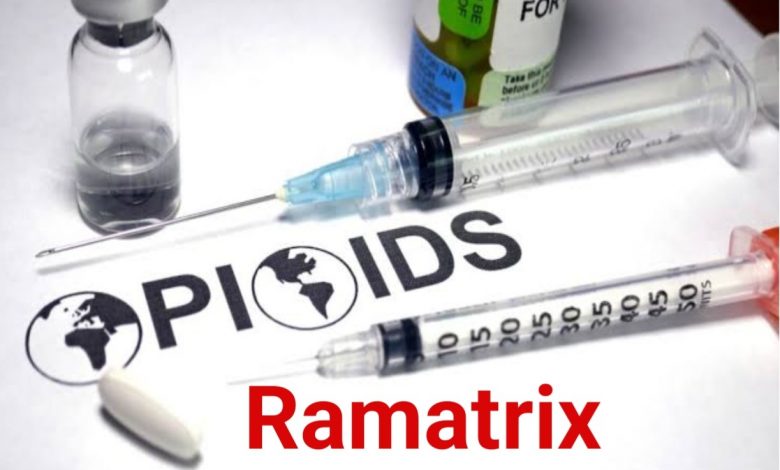Ramatrix: Uses, How It Works, Dosage, Side Effects, Interactions

What is Ramatrix?
Ramatrix is a brand of buprenorphine used to treat opioid dependence (addiction to opioid drugs, including heroin and narcotic painkillers). Buprenorphine is in a class of medications called opioid partial agonist-antagonists and naloxone is in a class of medications called opioid antagonists.
Buprenorphine is used alone and the combination with naloxone to prevent withdrawal symptoms when someone stops taking opioid drugs by producing similar effects to these drugs.
How do I know if Ramatrix is right for me?
Ramatrix is known as a safe and effective medication that can help individuals who are grappling with opioid addiction. If you have become dependent on one or more opioids, incorporating Ramatrix into a comprehensive plan at a medication-assisted treatment program can help you put your abuse to an end without struggling with cravings or painful withdrawal symptoms. The best way to determine if Ramatrix is the right medication for you is to speak to your physician who can evaluate your needs and recommend the appropriate treatment for you.
How should this medicine be used?
Ramatrix comes as a sublingual tablet. After your doctor determines an appropriate dose, these products are usually taken once a day. To help you remember to take or apply Ramatrix, take or apply it around the same time every day. Follow the directions on your prescription label carefully, and ask your doctor or pharmacist to explain any part you do not understand. Take or apply Ramatrix exactly as directed. Do not take or apply more or less of it or take or apply it more often than prescribed by your doctor.
Your doctor may decide to start your treatment with Ramatrix, which you will take in the doctor’s office. You will start on a low dose of Ramatrix and your doctor will increase your dose for 1 or 2 days before switching you to buprenorphine and naloxone. Depending on the type of opioid that you were taking, a different option that your doctor may choose is to start you on treatment with buprenorphine and naloxone right away. Your doctor may increase or decrease your buprenorphine and naloxone dose depending on your response.
If you are taking the Ramatrix sublingual tablets, place the tablets under your tongue until they completely melt. If you are taking more than two tablets, either place them all under your tongue at the same time or place them under your tongue up to two at a time. Do not chew the tablets or swallow them whole. Do not eat, drink, or talk until the tablet dissolves completely.
When using Ramatrix sublingual film, rinse your mouth with water before you place the film. Place the film with a dry finger under your tongue to the right or left of the center and hold the film in place for 5 seconds. If you are using two films, place the other one on the opposite side under the tongue. Do not put the films on top of or near each other. Do not use more than two films at one time. Do not cut, tear, chew, swallow, touch or move the film while it dissolves. Do not eat or drink anything until the film dissolves completely.
If you need to switch from Ramatrix to another brand, your doctor may need to adjust your dose. Each time you receive your medication, check to be sure that you have received the buprenorphine product that was prescribed for you. Ask your pharmacist if you are not sure that you received the right medication.
Do not stop taking Ramatrix without talking to your doctor. Stopping Ramatrix too quickly can cause withdrawal symptoms. Your doctor will tell you when and how to stop taking Ramatrix. If you suddenly stop taking Ramatrix, you may experience withdrawal symptoms such as hot or cold flushes, restlessness, teary eyes, runny nose, sweating, chills, muscle pain, vomiting, or diarrhea.
Is Ramatrix safe in pregnancy?
Buprenorphine/naloxone is safe in pregnancy and is the first-line treatment for OUD in pregnancy along with methadone. A pregnant patient in withdrawal should be started on opioid agonist therapy (OAT) urgently and connected to prenatal care and support.
Can someone overdose on Ramatrix?
Because of its partial activity on the opioid receptor and ceiling effect, the risk of overdose with Ramatrix is very low, and lower than that of any other opioids. Ramatrix was not found to be a direct contributor to any accidental opioid-related deaths, as opposed to fentanyl and fentanyl analogs.
Starting Ramatrix is much less likely to be associated with an opioid overdose than discharging someone with OUD without any treatment. For the elderly or people on high doses of benzodiazepines, start with lower doses of Ramatrix (e.g., 2mg starting dose and maximum Day 1 dose of 8mg) to lower the risk of respiratory depression.
How long will I need to be on Ramatrix?
The period of time that you will need to be on Ramatrix will be a decision that you and your doctor will make. Extensive research has proven that Ramatrix is safe to use both long- and short-term. Some people take Ramatrix for long periods of time, while others only take it for a little while before tapering off. Ramatrix is beneficial in the sense that it stops drug cravings and withdrawal symptoms so that individuals can maintain mental clarity so they can continue working, going to school, engaging in therapy, and so on. Ramatrix’s effectiveness does not lessen over time, which means that you can keep using it as long as you need.
What if I no longer wish to take Ramatrix? Can I stop or switch to a different medication?
Just because Ramatrix is approved for long-term use does not mean that an individual has to remain on Ramatrix for the rest of his or her life. If you and your physician decide that Ramatrix is no longer the medication for you, or if you have reached a point in your treatment where you are ready to stop using medications, you can begin to taper off Ramatrix with small doses until your system is completely cleared. At that point, you can either switch medications or stay medication-free.
How does Ramatrix compare to methadone?
Ramatrix and methadone have both been proven effective in opioid addiction. Methadone has been shown to have a slightly higher retention rate in treatment, but it is unclear if this result is due to the medication or due to the wrap-around behavioral health services and the close monitoring that are components of methadone programs. Methadone is better suited for patients who have psychiatric instability, addiction to multiple substances, or other conditions that require close monitoring. Ramatrix has several advantages: It is available in primary care settings, it can be given to stable patients with follow-up once a month or every three months, and its partial agonist properties help prevent overdose death.
Can I become addicted to Ramatrix?
Yes. Ramatrix is a powerful medication that can lead to dependency and tolerance if it is abused. If taken as prescribed, Ramatrix is safe and effective. Comprised of two primary ingredients (buprenorphine and naloxone), Ramatrix is able to stimulate the same receptors in the brain that other opioids do all without creating the same uncoordinated high. As a result, buprenorphine is able to help you stay focused on your daily goals and accomplish them.
Does Ramatrix interact with other drugs or medications?
Like most medications, Ramatrix can cause interactions. Therefore, you should always tell your physician what medications you are on before starting a Ramatrix. This medication can cause powerful effects when combined with other opioids such as oxycodone, codeine, hydrocodone, and heroin. It also causes negative effects when combined with alcohol. Those who are taking Ramatrix should not take sleeping pills, narcotic painkillers, or sedatives, and should not drink alcohol. In regards to all other medications, please speak with your physician to determine what is safe and what is not.
What is the price of Ramatrix treatment?
The treatment provided at Comprehensive Treatment Centers is individualized to meet the needs of each patient. As part of these plans, individuals can obtain the medication, therapy, and other services that are deemed appropriate for them. Since a patient’s care will be based on his or her needs, the cost can vary. To talk about the price of care, contact an intake specialist today.





